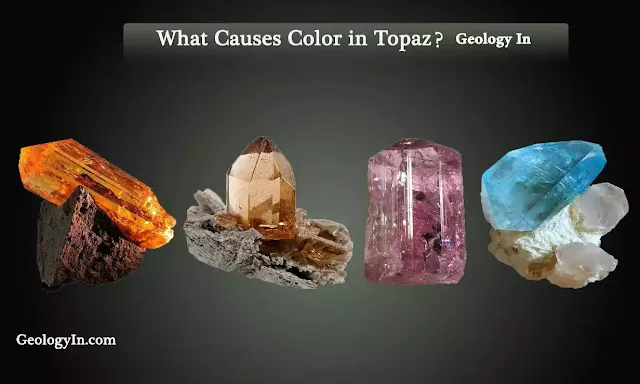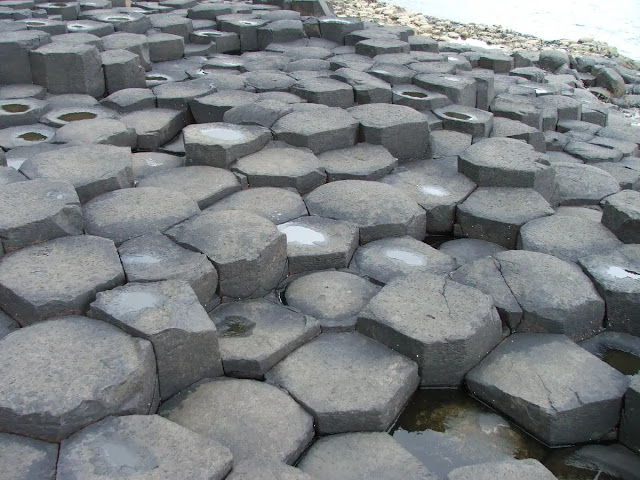Topaz Colors: Colors of Topaz and Causes
Topaz is a highly valued gemstone known for its exceptional color diversity, ranging from colorless to deep blue, pink, green, vibrant orange, and rare red. These variations result from natural trace elements, crystal lattice defects, and artificial treatments.
Unlike gemstones such as ruby or sapphire where color is inherent to their chemical composition, topaz is allochromatic. This means its color is caused by these trace impurities or defects within its crystal structure, rather than by the core elements that make up the gemstone itself. Even tiny amounts of these 'foreign' elements or structural imperfections can have a dramatic impact on the gem's final appearance.
- Iron: Introduces yellow, orange, and brown tones, depending on concentration.
- Chromium: Creates pink, red, and violet-to-purple hues.
- Manganese: Can contribute to pink and reddish tones.
- Vacancies and imperfections: Missing atoms or structural defects in the crystal lattice can lead to blue colors.
 |
| Topaz Colors: Colors of Topaz |
Topaz Colors
Topaz, the November birthstone, boasts a remarkable spectrum of colors, far exceeding its familiar yellow hue.
Topaz is a beautiful and versatile gemstone that is found in a variety of colors. Natural topaz can be colorless, white, yellow, orange, brown, pink, red, purple, or blue. The most common colors of topaz are yellow, orange, and brown. Blue topaz is the most popular color of topaz, but it is actually quite rare in nature. Most blue topaz is created by treating colorless topaz with heat or radiation. The color of topaz is caused by the presence of trace impurities in the mineral.
 |
| Topaz gemstones in multiple colors including colorless, Swiss blue, London blue, green, yellow, orange, brown, pink, and rare red topaz arranged for display. |
Colors of Topaz Causes
Yellow topaz: Yellow topaz is the most common color of topaz. It is caused by the presence of iron within the crystal. Yellow topaz can range in color from a pale yellow to a deep golden brown.
Blue topaz: Blue topaz is the second most common color of topaz. It is caused by the presence of chromium or titanium within the crystal. Blue topaz can range in color from a pale blue to a deep sapphire blue.
Pink topaz: Pink topaz is a relatively rare color of topaz. It is caused by the presence of manganese within the crystal. Pink topaz can range in color from a pale pink to a deep rose red.
Red topaz: Red topaz is the rarest color of topaz. It is caused by the presence of iron or manganese within the crystal. Red topaz can range in color from a pale pink to a deep blood red.
Green topaz: Green topaz is a very rare color of topaz. It is caused by the presence of chromium or iron within the crystal. Green topaz can range in color from a pale green to a deep forest green.
Purple topaz: Purple topaz is a very rare color of topaz. It is caused by the presence of titanium or manganese within the crystal. Purple topaz can range in color from a pale lavender to a deep purple.
%20(1).jpg) |
| Imperial Topaz on matrix from Ouro Preto, Minas Gerais, Brazil Credit: A.D.H ©_© Private collection |
Formation of Topaz
Topaz is formed in a variety of geological environments, including igneous, metamorphic, and hydrothermal. In igneous rocks, topaz is formed when molten magma cools and crystallizes. In metamorphic rocks, topaz is formed when existing rocks are subjected to high temperatures and pressures. In hydrothermal rocks, topaz is formed when hot mineral-rich fluids flow through rocks and deposit minerals.
Topaz is typically found in association with other minerals, such as quartz, mica, and feldspar. It is also found in association with some metals, such as tin and lithium.
Properties of Topaz
Color: Topaz occurs in a captivating spectrum of colors, including:
- Yellow: The most common natural color, ranging from pale lemon to deep golden honey.
- Orange: A vibrant and fiery hue, often seen in imperial topaz.
- Brown: A warm and earthy tone, sometimes with reddish or yellowish undertones.
- Blue: A popular and valuable color, often achieved through heat treatment.
- Pink and Red: Rare and precious, these colors add a touch of elegance and sophistication.
- Green: An uncommon but mesmerizing color, often with a bluish or yellowish tinge.
- Colorless: Pure topaz is colorless, often used as a base for treatments to achieve other colors.
Luster: Topaz possesses a vitreous luster, meaning it has a glassy, shiny appearance like glass. This luster contributes to the gem's brilliance and sparkle.
Hardness: Topaz ranks 8 on the Mohs hardness scale, making it quite durable and resistant to scratching. This makes it suitable for everyday wear in jewelry.
Transparency: Topaz can be transparent to translucent, allowing light to pass through it to varying degrees. This translucency adds depth and brilliance to the gemstone.
Fracture: Topaz has a conchoidal fracture, meaning it breaks with smooth, curved surfaces. This type of fracture is less common than cleavage but can still occur under pressure.
Fluorescence: Some topaz varieties exhibit fluorescence, meaning they emit a visible light when exposed to ultraviolet radiation. This fluorescence can be helpful in identifying certain types of topaz.
Pleochroism: This fascinating property allows topaz to display different colors depending on the viewing angle. For example, a blue topaz might appear greenish when viewed from a different direction.
Refractive Index: The refractive index of topaz is a measure of how much light bends when it passes through the gem. This property helps gemologists identify different types of topaz.
Inclusions: Topaz can contain various inclusions, such as bubbles, needle-like crystals, and fractures. These inclusions can add character and uniqueness to the gemstone, but they can also affect its value.
Best Field Indicators: are crystal habit, color, density and hardness.
 |
| Topaz Colors: Colors of Topaz |
Imperial Topaz: Gemstones, Properties, Value
Mystic Topaz: Enhanced Brilliance



%20(1).webp)




